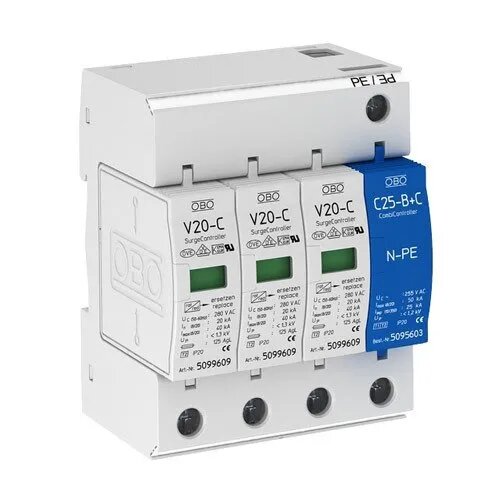Surge Suppressors: Essential Power Devices Explained

In today’s tech-driven world, protecting IT hardware and other critical systems is paramount. One of the key components in ensuring the longevity and reliability of electronic devices is the surge suppressor. These devices, also known as surge protectors, safeguard IT hardware from voltage spikes, ensuring that sensitive computer hardware and technology remain protected. This post delves into the role and importance of surge suppressors in the context of power devices, technology, and IT hardware, providing an in-depth understanding of their functionality and benefits.
What Are Surge Suppressors?
Surge suppressors are devices designed to protect electrical and electronic equipment from voltage surges and spikes. These surges can occur due to various reasons, such as lightning strikes, power outages, or sudden changes in electrical load. When a surge occurs, it can severely damage the sensitive components of IT hardware, resulting in data loss, equipment failure, or even fire hazards. Surge Suppressors act as the first line of defense, preventing excess voltage from reaching your equipment.
How Surge Suppressors Work
The primary function of surge suppressors is to divert excess electrical energy away from the connected devices. This is achieved through components like metal oxide varistors (MOVs), which are capable of absorbing the excess voltage and dissipating it safely. In simple terms, when a surge occurs, the surge suppressor detects the excess voltage and redirects it to the ground, ensuring that only the appropriate level of voltage reaches your devices.
Surge suppressors can be either basic, offering minimal protection, or advanced, with multiple layers of protection and monitoring capabilities. The choice of surge suppressor depends on the sensitivity of the IT hardware and technology involved. For high-end computer hardware, advanced surge suppressors with additional features, such as filtering and noise reduction, are recommended.
Importance of Surge Suppressors in IT Hardware
In the realm of IT hardware and technology, surge suppressors play a crucial role in protecting expensive and critical systems. Computer hardware, networking devices, and power devices are all susceptible to damage from power surges. The consequences of not having adequate protection can be costly, leading to hardware replacements, data loss, and downtime that disrupts operations.
Surge suppressors provide an added layer of security, ensuring that even during unexpected power fluctuations, IT hardware remains intact and operational. In industries where technology is the backbone of operations, such as data centers and telecommunication networks, surge suppressors are a necessity rather than an option. They ensure that critical devices like servers, routers, and other networking hardware continue to function efficiently, even in adverse electrical conditions.
Types of Surge Suppressors
There are various types of surge suppressors available, each designed to suit different applications and levels of protection:
- Basic Power Strip Surge Suppressors
These are the most common type of surge suppressors, often seen as multi-outlet strips with built-in surge protection. They provide basic protection against everyday power fluctuations and are suitable for protecting small electronics like desktop computers and printers. - Whole-House Surge Suppressors
For comprehensive protection, whole-house surge suppressors are installed at the main electrical panel of a building. These are designed to protect all connected devices throughout the premises, ensuring that any surge originating outside the building is neutralized before it reaches individual appliances or IT hardware. This type of surge suppressor is essential for businesses and organizations that use extensive networking and power devices. - Point-of-Use Surge Suppressors
These are placed directly at the point where devices are plugged in. Often used for protecting sensitive and high-value IT equipment like servers and networking devices, point-of-use surge suppressors offer advanced protection with features such as noise filtering and power conditioning. They are ideal for environments where stable and clean power supply is critical for technology operations. - Rack-Mounted Surge Suppressors
For IT infrastructure like server racks, specialized rack-mounted surge suppressors are available. These units are designed to fit within server racks, providing protection to the various devices housed within. They offer high levels of protection and are essential for maintaining the performance and reliability of IT hardware in data centers and server rooms.
Benefits of Using Surge Suppressors
The implementation of surge suppressors offers numerous benefits, particularly for businesses and individuals relying on advanced computer hardware and technology:
- Protection Against Voltage Spikes
The primary benefit is the protection against voltage spikes and surges. IT hardware, such as servers and networking devices, are highly sensitive to power variations. Surge suppressors prevent these spikes from causing irreversible damage, ensuring the longevity of the equipment. - Data Protection
Data loss is a significant concern for any business or individual using technology. When power surges occur, they can result in sudden shutdowns or malfunctions that may corrupt or delete important data. Surge suppressors minimize this risk by providing a stable power supply, even during fluctuations. - Cost Savings
Investing in surge suppressors can save businesses substantial costs related to equipment replacement and downtime. Replacing IT hardware and Power Devices damaged by power surges is far more expensive than purchasing and maintaining surge suppressors. Thus, they offer a cost-effective solution for long-term protection. - Enhanced Reliability and Efficiency
For businesses where uptime and reliability are critical, such as in telecommunication and data centers, surge suppressors are essential. They ensure continuous operation, reducing the risk of downtime and maintaining the efficiency of technology and networking systems.
Choosing the Right Surge Suppressor
When selecting a surge suppressor for IT hardware, several factors need to be considered:
- Joule Rating
The joule rating of a surge suppressor indicates its energy absorption capacity. Higher joule ratings mean better protection. For protecting expensive and critical IT hardware, a surge suppressor with a high joule rating is recommended. - Clamping Voltage
The clamping voltage is the threshold at which the surge suppressor begins to redirect excess energy. Lower clamping voltages offer better protection as they activate at lower thresholds, providing a faster response to surges. - Response Time
The faster the response time, the better the protection. Surge suppressors with lower response times can react quickly to voltage spikes, ensuring that sensitive equipment remains unaffected. - Additional Features
Modern surge suppressors often come with additional features such as noise filtering, power conditioning, and indicator lights. These features enhance the overall protection and reliability of the power supply, making them suitable for advanced computer hardware and networking setups.
Installation and Maintenance
Proper installation and maintenance of surge suppressors are crucial for optimal performance. For whole-house or point-of-use surge suppressors, professional installation is recommended to ensure that they are correctly wired and grounded. Regular maintenance checks, such as inspecting for damage or wear and ensuring that indicator lights are functional, help extend the life of surge suppressors and maintain protection.
Conclusion
Surge suppressors are an indispensable component of any IT hardware setup. As Technology and computer hardware continue to evolve, the need for reliable power devices like surge suppressors becomes increasingly important. By investing in the right surge suppressor, businesses and individuals can protect their valuable equipment, ensure data integrity, and save costs associated with equipment replacement and downtime. Surge suppressors, whether for small-scale personal use or large-scale industrial applications, offer peace of mind and long-term benefits, making them an essential element in any technological environment.



